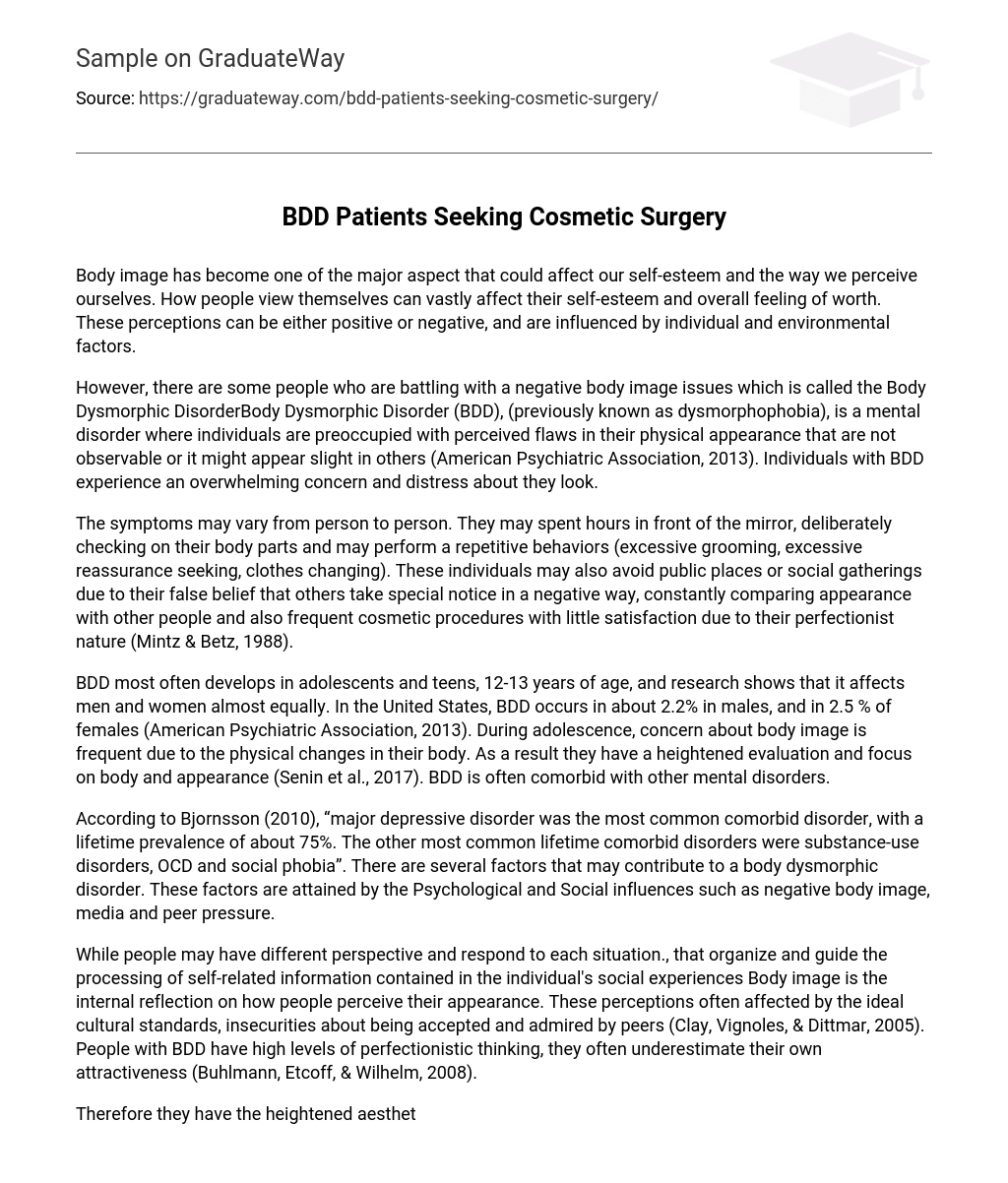Body image has become one of the major aspect that could affect our self-esteem and the way we perceive ourselves. How people view themselves can vastly affect their self-esteem and overall feeling of worth. These perceptions can be either positive or negative, and are influenced by individual and environmental factors.
However, there are some people who are battling with a negative body image issues which is called the Body Dysmorphic DisorderBody Dysmorphic Disorder (BDD), (previously known as dysmorphophobia), is a mental disorder where individuals are preoccupied with perceived flaws in their physical appearance that are not observable or it might appear slight in others (American Psychiatric Association, 2013). Individuals with BDD experience an overwhelming concern and distress about they look.
The symptoms may vary from person to person. They may spent hours in front of the mirror, deliberately checking on their body parts and may perform a repetitive behaviors (excessive grooming, excessive reassurance seeking, clothes changing). These individuals may also avoid public places or social gatherings due to their false belief that others take special notice in a negative way, constantly comparing appearance with other people and also frequent cosmetic procedures with little satisfaction due to their perfectionist nature (Mintz & Betz, 1988).
BDD most often develops in adolescents and teens, 12-13 years of age, and research shows that it affects men and women almost equally. In the United States, BDD occurs in about 2.2% in males, and in 2.5 % of females (American Psychiatric Association, 2013). During adolescence, concern about body image is frequent due to the physical changes in their body. As a result they have a heightened evaluation and focus on body and appearance (Senin et al., 2017). BDD is often comorbid with other mental disorders.
According to Bjornsson (2010), “major depressive disorder was the most common comorbid disorder, with a lifetime prevalence of about 75%. The other most common lifetime comorbid disorders were substance-use disorders, OCD and social phobia”. There are several factors that may contribute to a body dysmorphic disorder. These factors are attained by the Psychological and Social influences such as negative body image, media and peer pressure.
While people may have different perspective and respond to each situation., that organize and guide the processing of self-related information contained in the individual’s social experiences Body image is the internal reflection on how people perceive their appearance. These perceptions often affected by the ideal cultural standards, insecurities about being accepted and admired by peers (Clay, Vignoles, & Dittmar, 2005). People with BDD have high levels of perfectionistic thinking, they often underestimate their own attractiveness (Buhlmann, Etcoff, & Wilhelm, 2008).
Therefore they have the heightened aesthetic sensitivity which triggers the BDD. Aesthetic sensitivity refers to awareness and appreciation of beauty which includes symmetry, averageness, secondary sexual characteristics, and general attractiveness (Veale D, Neziroglu F, 2010) Media has become a critical part of our everyday lives that these platforms are to blame for instilling insecurities in people. People often compare themselves with images that are being represented in the media. These comparisons comes from what has been deemed ideal by the media as well as cultural expectations (Dohnt & Tiggemann, 2006).
For individual with BDD feel that they cannot live up to the expectations around them and therefore they might feel unworthy, unattractive or unwanted. Peer pressure also negatively affects one’s self esteem. Bdd is more common in people who have experienced verbal bullying and teasing because of their appereance (Matz, Foster, Faith, & Wadden, 2002). Peer pressure predominantly happened in individuals whose appeareance is different from the others. These negative experiences in individual’s childhood may lead to a reassurance and validation seeking in their adulthood and as a result, they have the perfectionist tendencies





